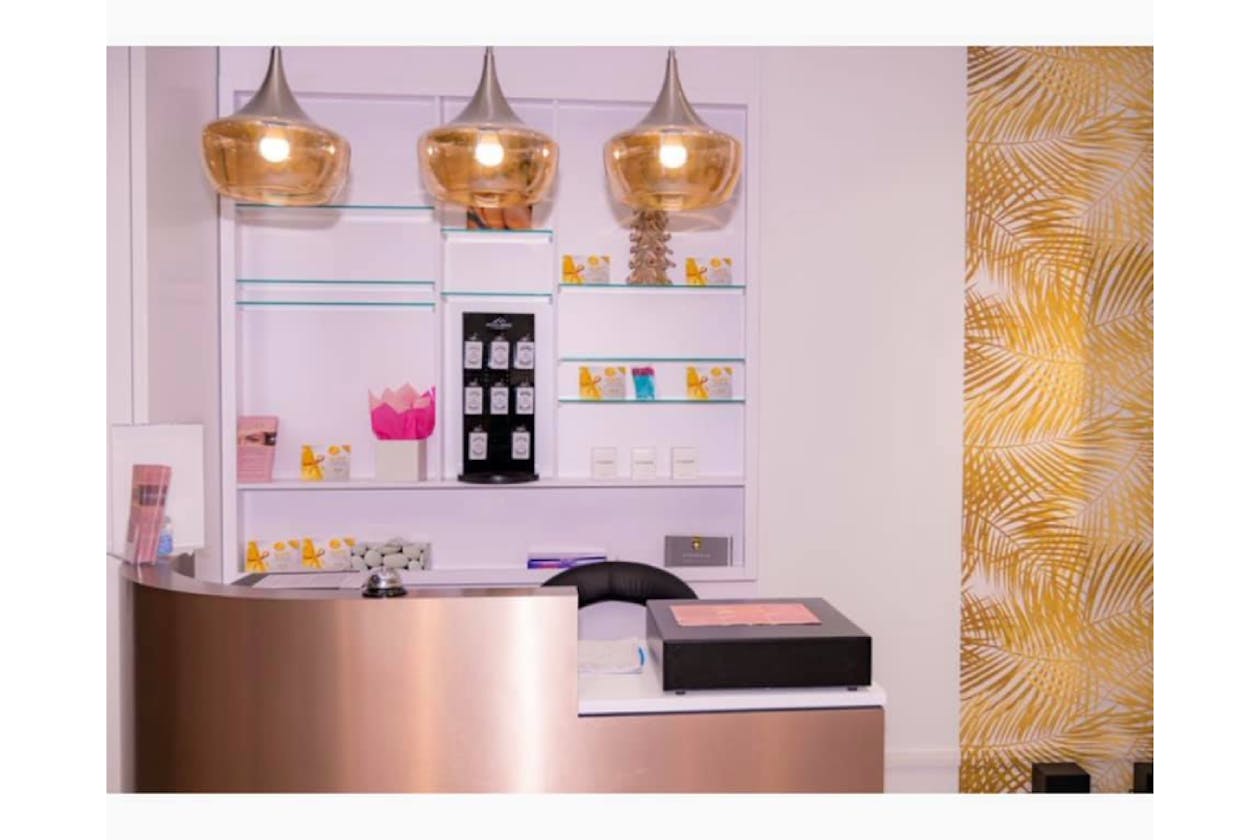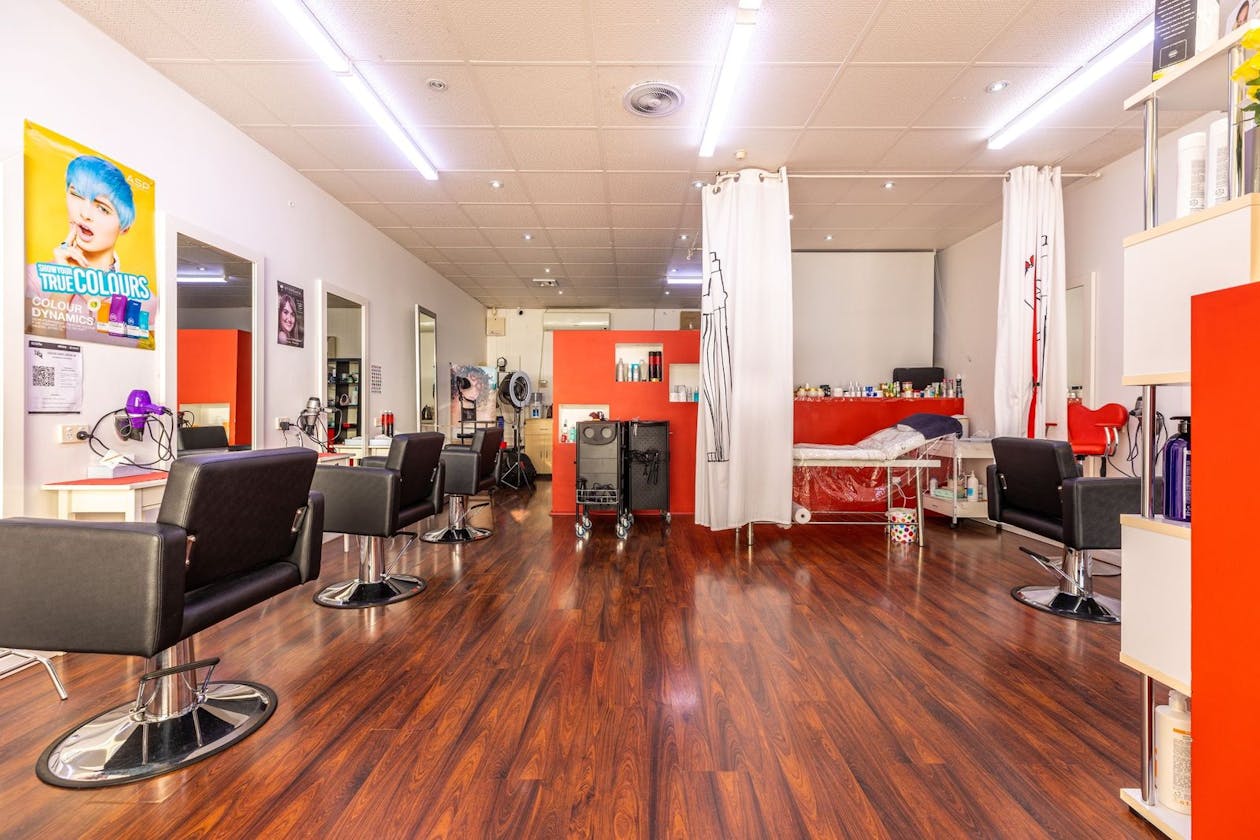
Henna Book your henna appointment online and save
Top 20 Henna ArtistsFor more salons, check out Fresha’s list of Aesthetics Clinics.
 3/60 Railway Street, , Mudgeeraba 4213(12)Your go-to destination for manicures, pedicures, lash and brow treatments, waxing services and deluxe facials in Mudgeeraba QLD. Book online today.
3/60 Railway Street, , Mudgeeraba 4213(12)Your go-to destination for manicures, pedicures, lash and brow treatments, waxing services and deluxe facials in Mudgeeraba QLD. Book online today.
Beauty Brow & Lash Bar
6/5 King Street, Prahran 3181(300)Beauty Brow & Lash Bar, one of Melbourne's best lash salons will have you looking your best. Our talented technicians deliver friendly, professional service.
DB Brow Studio
Shop 1035a Ingle Farm Shopping Centre, Ingle Farm 5098(10)Treat yourself to perfectly shaped brows, lashes that go for miles, or a revitalising facial at DB Brow Studio in Ingle Farm Shopping Centre today.
Elizabeth Skin Care
1 / 442 Darling Street, Balmain 2041(13)For beautiful skin, visit Elizabeth Skin Care. Try their signature My Payot Experience facial. Remove unwanted hair with electrolysis or IPL laser or sugaring.
Grace Threading Coomera
83-121 Foxwell Road, Coomera 4209(5)Indulge yourself in an invigorating session with the friendly beauty therapists at Grace Therapy Coomera today.
XXLUXEBROWSXX
Shop 4 1132 Gold Coast Highway, Palm Beach 4221(76)XXLUXEBROWSXX offers a range of lash and brow treatments, including eyelash extensions and waxing. Choose from a range of natural to glamorous lashes.
S&K Hair and Beauty Lounge
Shop 126 / 50 Asquith Street, Silverwater 2128(42)S&K Hair and Beauty Lounge is a Silverwater beauty studio offering fabulous skin and beauty treatments in a professional salon.
Shellz Brow Bar
163 Commercial Road, South Yarra 3141(73)Shellz Brow Bar is home to a great team of lash and brow specialists who know how to make your eyes pop. Book an appointment for our South Yarra salon today.
Your Time Beauty
163 Pascoe Vale Road, Moonee Ponds 3039(47)Your Time Beauty in Moonee Ponds is your go-to when you need some ‘me time’ in the form of massage, waxing, facials, lash and brow maintenance and spa packages.
Dynamic Skin Services
16 / 88 Broadway, Nedlands 6009(5)Dynamic Skin Services offers leading technology in beauty therapy. They are experts in cosmetic tattooing using organic inks, and non-laser tattoo removal.
Kai and Co - Kingsgrove
300 Kingsgrove Road, Kingsgrove 2208(131)Kai and Co – Kingsgrove are a boutique hair salon. Bechi and the team are passionate about great hair and empowering their clients to look their best.
Willow Skin and Beauty
747 Centre Road, Bentleigh East 3165(47)Beauty in Bentleigh East? Willow Skin and Beauty is dedicated to enhancing your natural features. With a team of highly skilled therapists and practitioners, you’ll be thrilled with the results from this gorgeous, professional salon.
Beauty By Mela
131 Union Road, Ascot Vale 3032(95)Beauty by Mela is an innovative beauty studio specialising in decadent treatments to refresh and revitalise the skin located inside Ascot Value Beauty, Ascot Value.
Gloss Beauty Salon
Shop 1A / 57 Minnamurra Circuit, Prestons 2170(1919)For all your skin, beauty and relaxation needs, look no further than Gloss Beauty Salon, conveniently situated on Minnamurra Circuit in Prestons NSW.
Divine Brow Lash
18 Pelican Street, Surry Hills 2010(443)Divine Brow Lash is a leading lash and brow studio in Sydney’s Surry Hills offering luxe treatments.
Rimi Beauty Salon Stafford
19/400 Stafford Road, Stafford 4053(140)For all your threading, waxing and beauty needs, the fantastic team at Rimi Beauty on Teviot Road in Greenbank have got you sorted. Book online today.
Style Mecha
3 / 100 Mooroondu Road, Thorneside 4158(237)The team at Style Mechanics will utterly spoil your hair and beauty needs. The salon offers Racoon hair extensions, Wella Professional products, and Nioxin.
Royal Thai Massage Flinders
Shop 7 / 2 Queen Street, Melbourne CBD 3000(19)Need a truly professional massage treatment that has you feeling like a whole new person? Book an appointment at Royal Thai Massage Flinders, with Bookwell.
Just Threading - Highpoint
Shop 2153 Level 2 / 120 Rosamond Road (Highpoint Shopping Centre), Maribyrnong 3032(9)Whether you’re after high quality lash and brow treatments, a revitalizing facial or a wax, the amazing team of beauty pros at Just Threading in Highpoint Shopping Centre have got you covered.
Dazzling Hair and Beauty
3 / 60 North East Road, Walkerville 5081(44)All your essentials are under one roof at Dazzling Hair and Beauty. Come in for great haircuts, colouring, waxing, lash and brow treatments, and more.
Henna
For some of us, henna was our very first hair colouring experience. And it sure was messy back then. The powder was mixed with water to make a rather gritty, lumpy, smelly paste, which was then applied to the hair.
Thankfully, henna has come a long way, but it is still something best applied in a salon. Whilst not as popular these days for hair, we are seeing many salons offering amazing henna body art, especially for weddings.
Origins
Henna is made from a flowering plant called Lawsonia inermis, which tends to grow in the subtropical regions of Asia and Africa. And it has been used forever to dye hair, nails, skin, and fabric. It can also be mixed with other natural dyes to create different hues.
Using henna for body art began in the Bronze Age in the Mediterranean, and is depicted in many artworks. It was used to mark special occasions and events, such as births, weddings, birthdays, and victory. This was probably due to the belief that henna was considered to deliver blessings and good luck.
In some cultures, it would take many days to decorate a bride with henna, as it was classed as a sacred ceremony. This is referred to as Mehndi, and you will see this listed as a service at many of our Bookwell salons.
Henna Tattoos
You may also see it listed as Henna Body Art, Henna Hand Art, temporary Henna Tattoos, or Henna Eyebrow Tattoo.
Mehndi is something quite spectacular, and the designs are very intricate. They are also indicative of their land of origin. Some of the most beautiful designs come from India and Pakistan.
However, it's most likely that the art form originated in Egypt, and evidence has been found on Egyptian mummies. It's likely the plant, Lawsonia inermis, grew naturally in Egypt, and was carried to India.
It's Temporary
Of course, henna body art is not actually a tattoo, as it is not permanent. And it is only applied to the surface of the skin, not injected below. This is one of the reasons why it has become so popular.
This is how it works. First, a paste is made with the henna powder, and used to apply the design. This can be done with a plastic cone, stick or paint brush. The paste is allowed to dry, which usually takes 15-20 minutes.
As the paste dries, it will begin to crack. Often a solution, such as lemon juice and sugar, is applied at this stage, to remoisten the paste and darken the stain. The decorated area may be wrapped to keep in body heat, and this will intensify the colour.
Protecting Your Tattoo
When the wrapping is removed, the design will continue to darken over the next day or two. The 'tattoo' will last one to three weeks, depending on how it was applied, the quality of the henna, and where it is on the body. Applying a natural oil moisturiser will help protect it.
If you are considering getting a henna tattoo, it's worth putting some thought into your choice of design. This is particularly true for wedding Mehndi. For example, do you want the design to be symbolic, or just decorative?
If you want your hands decorated, try and avoid going for very large designs. The smaller and more intricate, the greater the effect. This is a statement piece, so you want it to look professional and eye-catching.
Choosing A Salon
And do go to a salon that specialises in the art. They will use good quality henna, and will have plenty of design ideas to show you.
Mehndi really is very beautiful, and well worth considering for your special day.